Multistage Compressor with 2 Rotors and 2 Stators rows
$80.00 $40.00 Student Discount
- The problem numerically simulates Multistage Compressor with 2 Rotor and 2 Stator rows using ANSYS Fluent software.
- We design the 3-D model by the Design Modeler software.
- We Mesh the model by ANSYS Meshing software, and the element number equals 972354.
- We use the Fram Motion method to define rotational motion for our compressor.
To Order Your Project or benefit from a CFD consultation, contact our experts via email (info@mr-cfd.com), online support tab, or WhatsApp at +44 7443 197273.
There are some Free Products to check our service quality.
If you want the training video in another language instead of English, ask it via info@mr-cfd.com after you buy the product.
Description
Multistage Compressor with 2 Rotor and 2 Stator rows CFD Simulation, ANSYS Fluent Tutorial
This simulation is about a Multistage Compressor with 2 Rotors and 2 Stators rows via ANSYS Fluent software. We perform this CFD project and investigate it by CFD analysis.
The compressor designed in this simulation is of axial type and consists of four rows, including two rows of stator and two rows of the rotor. In general, axial flow compressors are compressors whose airflow is parallel to the axis of rotation.
Axial compressors consist of two main parts: the rotor and the stator. Rotors are rows connected to the central shaft and rotate around the central axis of the compressor at a very high speed. Stators, on the other hand, are fixed and without rotation rows.
The primary function of rotors is to apply torque to the airflow and accelerate the air through rotational motion. The primary function of stators is to increase the air pressure and prevent its spiral movement around the longitudinal axis by equalizing the current parallel to the longitudinal axis of the compressor.
In other words, the stators convert the increased kinetic energy inside the compressor into static pressure and change the direction of air movement so that the airflow is ready to enter the next rotor. This simulation distinguishes two areas called stators and two areas called rotors.
The present model is designed in two dimensions using Design Modeler software. The model includes two rows of the rotor and two rows of the stator. Each row of stator or rotor consists of 22 blades with an airfoil cross-section.
The rotor blades have deflection, but the stator blades are horizontal and without deflection. Due to the perfectly symmetrical structure of this geometry and to reduce the computational cost, only one blade of each row of stator and rotor has been designed, and the periodic boundary condition has been used for its lateral surfaces.
The model is then meshed by ANSYS Meshing software. The model mesh is unstructured, and 972354 cells have been created.
CFD Method
In this simulation, the stator section is static, and all its walls are defined as stationary walls. However, the rotor section is defined as a moving zone using the Frame Motion method in cell zone conditions, and all the walls related to this section are also movable.
Therefore, a rotational motion with a rotational velocity of 25,000 rpm is defined for the airflow in the rotor area. Also, since the model’s prominent nature is related to pressure changes, the pressure boundary condition is used at the input and the output.
Multistage Compressor with 2 Rotors and 2 Stators Conclusion
After simulation, two-dimensional and three-dimensional contours related to pressure, velocity, turbulence kinetic energy, and pressure gradient are obtained.
Also, the airflow pathlines inside the compressor are obtained in three dimensions. Also, pressure and wall tension contours have been obtained on the blades’ body, the rotor’s central part, and the stator’s rotor.
The results show that the airflow pressure increases in the direction of horizontal airflow movement parallel to the compressor’s central axis. Also, the pathlines show the rotational movement around the rotors and stators well.


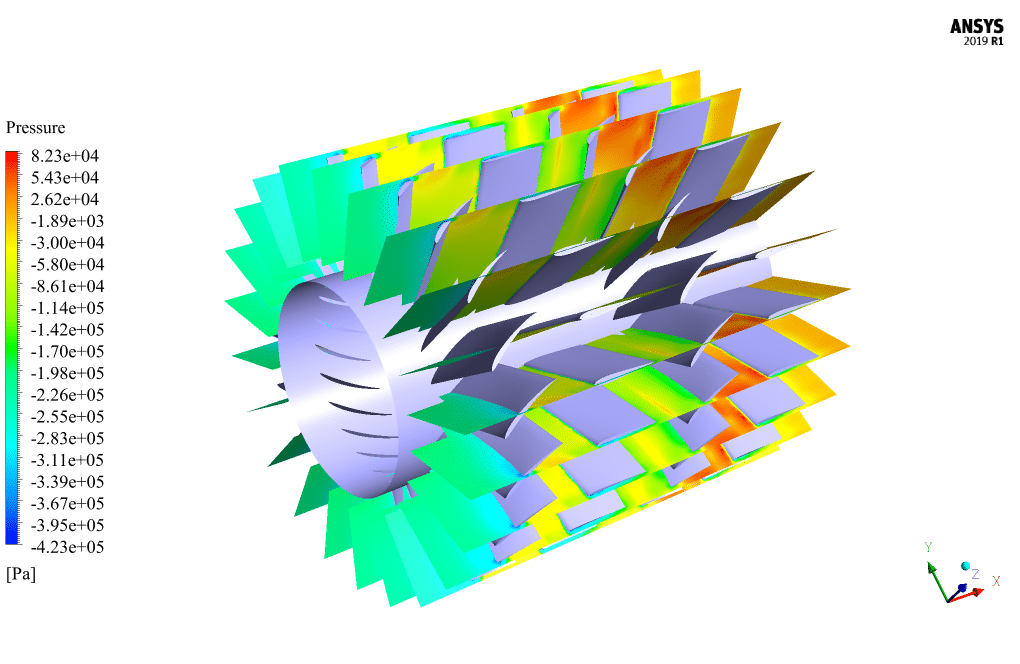
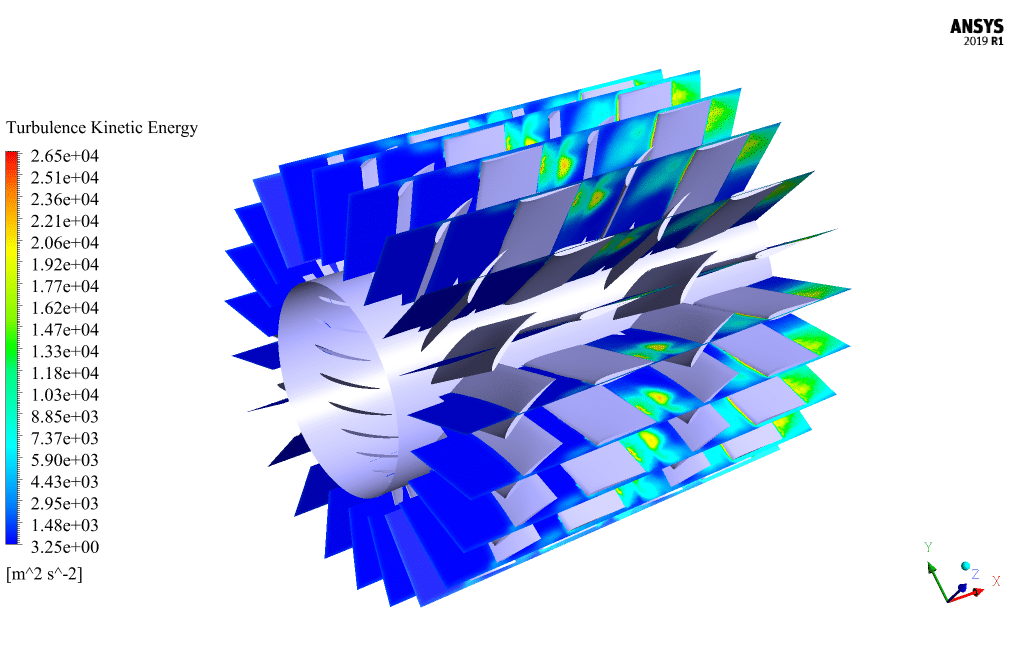

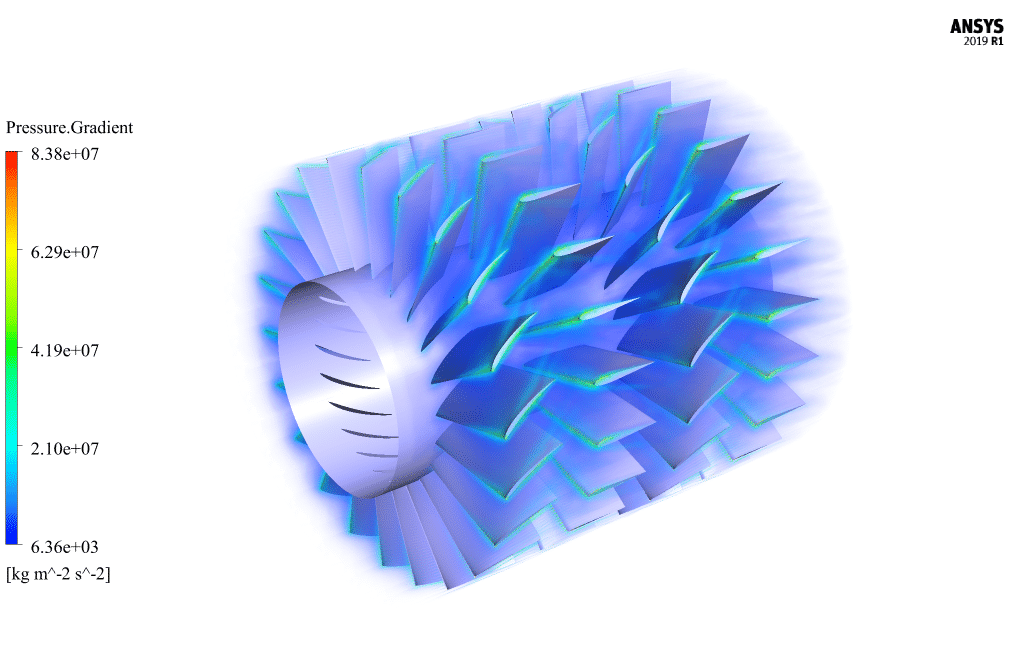

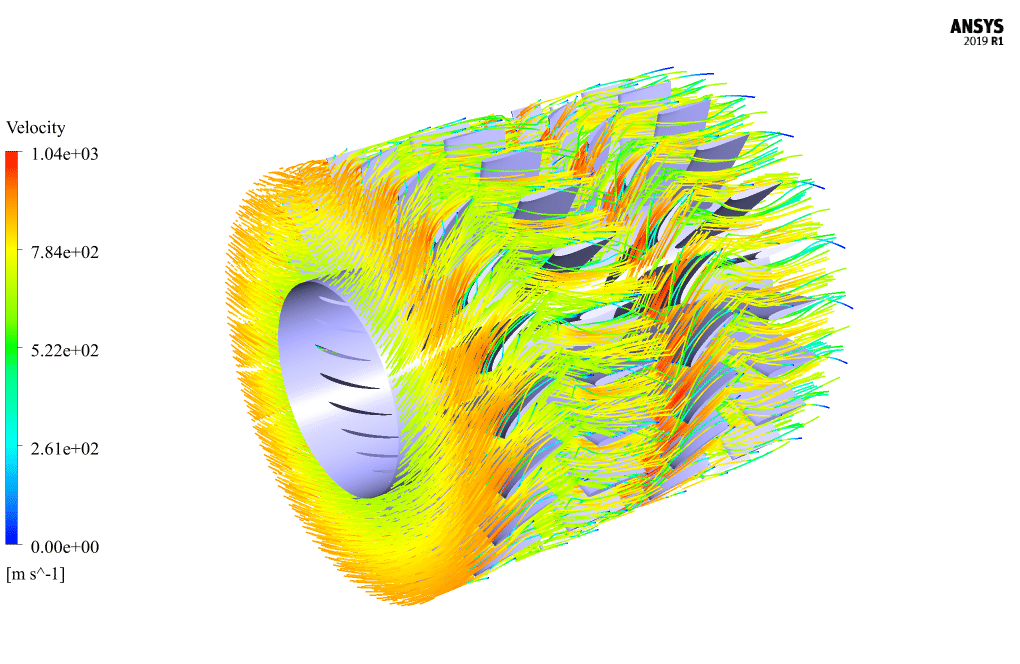





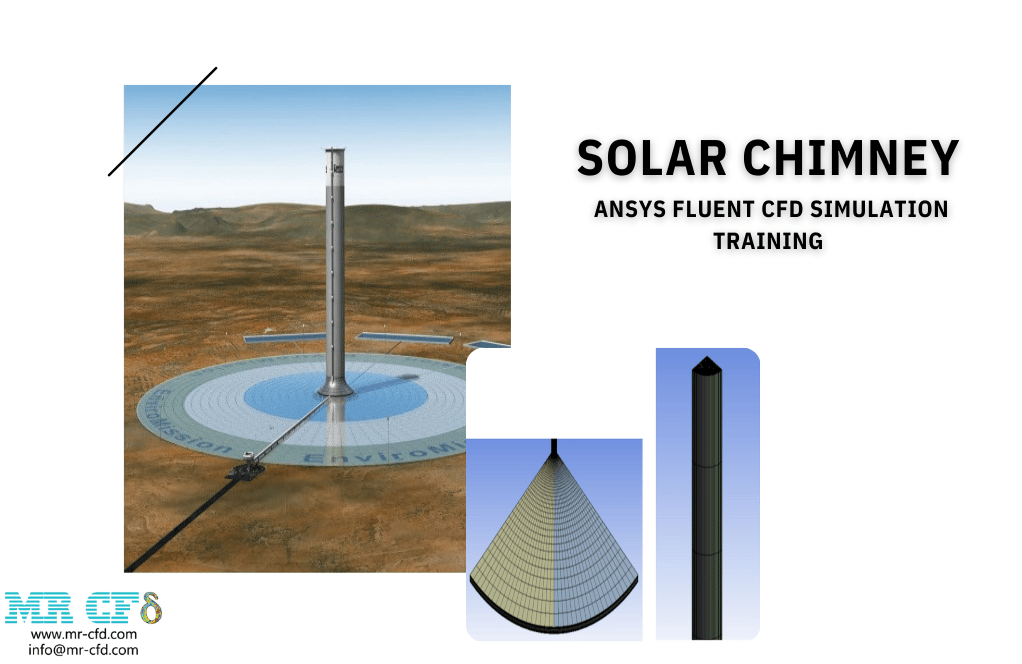
Mr. Javon Dickinson I –
The ANSYS Fluent Multistage Compressor tutorial provided a comprehensive and straightforward approach in simulating complex compressor stages. The results visualized the kinetic-to-static pressure transformation commendably.
MR CFD Support –
Thank you for your positive feedback! We’re thrilled to hear that you found our Multistage Compressor tutorial comprehensive and helpful. It’s wonderful that you could visualize and understand the pressure transformation within the compressor stages. If you have any more questions or need further assistance in your simulations, please feel free to reach out.
Peggie Carter –
I must commend the intricacies of the CFD process as exhibited in the Multistage Compressor simulation with ANSYS Fluent. The level of detail on the blade design, as well as the simulation of the rotating and stationary components, provided me with a clear understanding of axial compressors’ behaviors under different operational conditions. It’s exceptional how the detailed modeling helped capture the airflow’s interaction with the compressor’s components, mapping out a transformative journey from kinetic to static pressure. Fascinating insights were revealed through 3D and 2D contours of the various thermodynamic properties!
MR CFD Support –
Thank you for your review and the recognition of the details and intricacies in our CFD simulation of the Multistage Compressor with ANSYS Fluent. We strive to provide comprehensive and clear simulations that enhance understanding of engineering concepts like the axial compressors’ behavior. Your feedback is much appreciated, and it motivates us to continue developing high-quality learning products. If you have any further inquiries or require assistance with other simulations, feel free to reach out to us!
Karlee Williamson –
I thoroughly enjoyed learning with the Multistage Compressor CFD Simulation tutorial. It was clearly laid out and detailed, making difficult concepts much easier to grasp. The step-by-step guidance in ANSYS Fluent was truly beneficial.
MR CFD Support –
Thank you for taking the time to share your positive experience! We’re glad to hear that the tutorial was helpful and user-friendly. If you have any further questions or need more assistance with your learning journey, please let us know.
Mr. Gennaro Mraz III –
I’m really pleased with how comprehensive the CFD analysis is in this Multistage Compressor simulation. The detailed look into the rotor and stator function’s effect on air compression is precisely what I was looking for!
MR CFD Support –
Thank you for your positive feedback! We’re delighted to hear that our comprehensive CFD analysis of the Multistage Compressor has met your expectations. Our aim is to provide detailed insights into complex systems like these to help enhance understanding and improve design strategies. If you need any further information or assistance, please feel free to contact us!
Chance Kreiger –
This tutorial showed me so much about multistage compressors! I had no idea how rotors and stators worked together to compress the air. The visualizations of the air pathlines were particularly helpful. Great job!
MR CFD Support –
Thank you for your kind feedback! It’s great to hear that the simulation and the visualization of air pathlines were helpful for your understanding of multistage compressors. We always aim to provide valuable insights into complex processes, and it’s always rewarding to know when we’ve made a positive impact. If you have any more questions or need further information, don’t hesitate to reach out!
Cara Hintz –
I’m amazed at how the Multistage Compressor simulation captures the airflow dynamics! The detail on pressure increases and pathline movements provides great insight into the compressor’s function.
MR CFD Support –
Thank you for your positive feedback! We’re glad that you found the simulation detail on airflow dynamics and pressure insightful. It’s always rewarding to hear that our customers get valuable insights from our simulations. We appreciate your review and look forward to bringing you more high-quality ANSYS Fluent tutorials and simulations in the future.
Carlie Stark Jr. –
The tutorial was incredibly detailed! The step-by-step guidance through the meshing process and setup of boundary conditions for the stators and rotors gave me a clear understanding of how to approach my own compressor simulations. Excellent work on demonstrating the airflow patterns and pressure variations across the compressor stages.
MR CFD Support –
Thank you for your kind words! We’re delighted to hear that you found the tutorial detailed and helpful for understanding the meshing process and setting up stators and rotors in your own simulations. Your recognition of our efforts to demonstrate airflow and pressure is greatly appreciated. Should you have any further questions or need assistance with similar projects, please let us know. Thank you for choosing our learning products.
Rhea Murazik PhD –
I just completed the Multistage Compressor CFD Simulation with your ANSYS Fluent Tutorial, and it perfectly clarified the interplay between the rotors and stators. Impressive how the computational model predicts airflow and pressure changes throughout the multiple stages!
MR CFD Support –
Thank you for your positive feedback! We’re thrilled to hear that our tutorial on the Multistage Compressor with 2 Rotors and 2 Stators helped you understand the complex dynamics within axial compressors. We appreciate your acknowledgment of the model’s predictive capabilities in assessing airflow and pressure variations!
Mr. Edgar Larson II –
The review of the Multistage Compressor simulation with ANSYS Fluent software reveals superb potential learning opportunities. Totally gratifying!
MR CFD Support –
Thank you for your kind words. We’re pleased that our Multistage Compressor simulation tutorial met your expectations and provided a valuable learning experience!
Danyka Hermiston Sr. –
This Multistage Compressor simulation seems very comprehensive. I’m especially intrigued by the rotor dynamics. Can you expand upon how the Frame Motion method was applied to simulate the rotational motion of the rotors within the stator environment in ANSYS Fluent?
MR CFD Support –
Certainly, in this simulation, the Frame Motion method is applied by setting the rotors as rotating cell zones within the stationary domain of the stators. Each rotor zone is defined with an angular velocity corresponding to 25,000 rpm to simulate the actual behavior of a rotating compressor blade. ANSYS Fluent then calculates the relative motion between these domains, ensuring an accurate representation of the flow around the moving blades and the interaction with the static components (stators). This setup permits simulation of the continuous air intake, compression through the rotors, and pressure increase enforced by the stators without having to physically rotate the geometry, allowing the study of fluid dynamics and forces affecting blades operation in a computationally efficient manner.
Hulda Altenwerth V –
Wow, this detailed tutorial for the Multistage Compressor with 2 Rotors and 2 Stator rows sounds fascinating! The combination of rotors and stators and their functions within the compressor were explained very comprehensively. Also, the use of different simulations to obtain various contours—such as pressure and velocity—provides a clear understanding of how the system works. The high rotational velocity specified for the rotor is impressive, and the two-dimensional and three-dimensional visualizations must be quite enlightening. Thank you MR CFD for creating such rich and informative content. It’s clear that a lot of expert knowledge went into this CFD project.
MR CFD Support –
Thank you for your positive feedback! We’re delighted to hear that our tutorial on the Multistage Compressor with 2 Rotors and 2 Stator rows in ANSYS Fluent was able to provide comprehensive and informative insights. We strive to deliver high-quality educational content to help our customers understand complex systems clearly. Your appreciation truly motivates us to continue developing detailed and educational CFD analysis projects. If you have any more interests or need further information, don’t hesitate to contact us!
Loy Mante –
The tutorial seems in-depth. Can you tell me if the performance curves for the compressor stages were provided in the results?
MR CFD Support –
In the MR CFD product description for the Multistage Compressor with 2 Rotors and 2 Stator rows CFD Simulation, performance curves, such as pressure ratio vs. flow rate or efficiency vs. flow rate, were not explicitly mentioned as part of the provided results. It typically presents contours related to pressure, velocity, and other simulation details, but performance curves can usually be derived based on these results if needed.